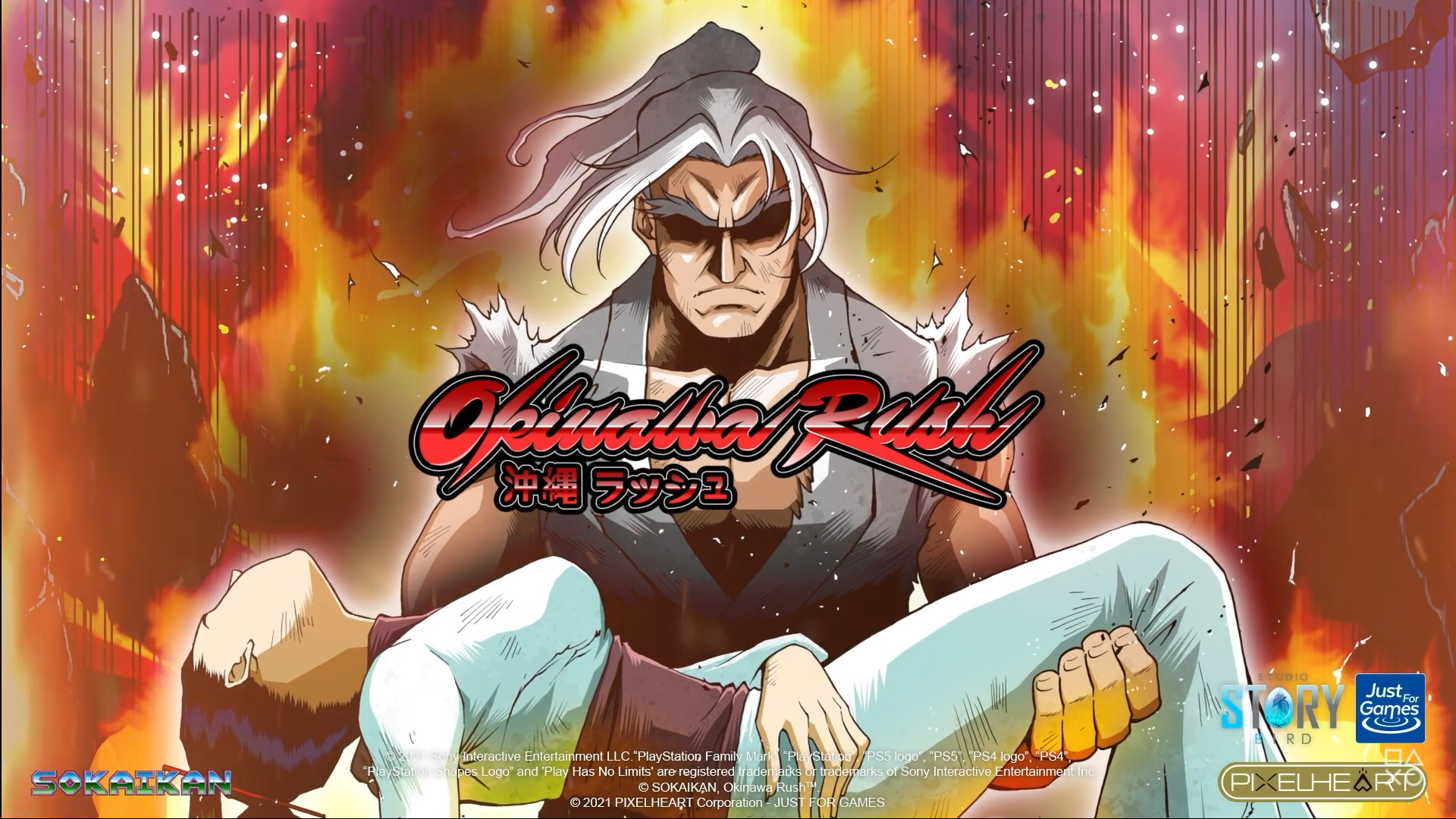Developed By: Sokaikan ltd
Published By: No Gravity Games
Platforms: PC, PlayStation 4, Xbox, Nintendo Switch
Reviewed On: PlayStation 4
Looking at the trailers of Okinawa Rush, a fast-paced sidescrolling retro pixel art style brawler with karate/kung fu elements. In a way, it feels like a love letter to an old 1984 NES game called Kung Fu Master combined with the design of Metal Slug. Here is my review of Okinawa Rush.
Gameplay And UI Design
Okinawa Rush comes off as an arcade-style beat ’em up with the main character having multiple karate move sets to fend off multiple foes. Firing this up puts my eyes in the strain as I am not used to the scanlines on the game screen. Fortunately, this can be turned off in the options menu by turning off the CRD option.
In the dojo, by blocking upwards, straight, downwards, and using moves like uppercuts or fireballs – You might think the enemies will attack you in different ways, but that is not the case. While there is a wide range of enemies – from ninjas, demons, fishes, plants, and worms – they all similarly approach you in packs, clipping into one another and rushing to strike you via close range or projectiles. My reaction response to this is to just block attacks via spam pressing forward like wave dash that blocks and attacks at the same time performing headbutt (forward + forward + attack) that also slams enemies to the wall.
While this method feels cheap, entertaining, and effective; it eliminates the need to block multiple directions and experiment with different moves in the game – it is also applicable to bosses. Furthermore, some moves such as uppercut or fireball, sometimes lag or fail to work when input using the analog stick as well as directional buttons.
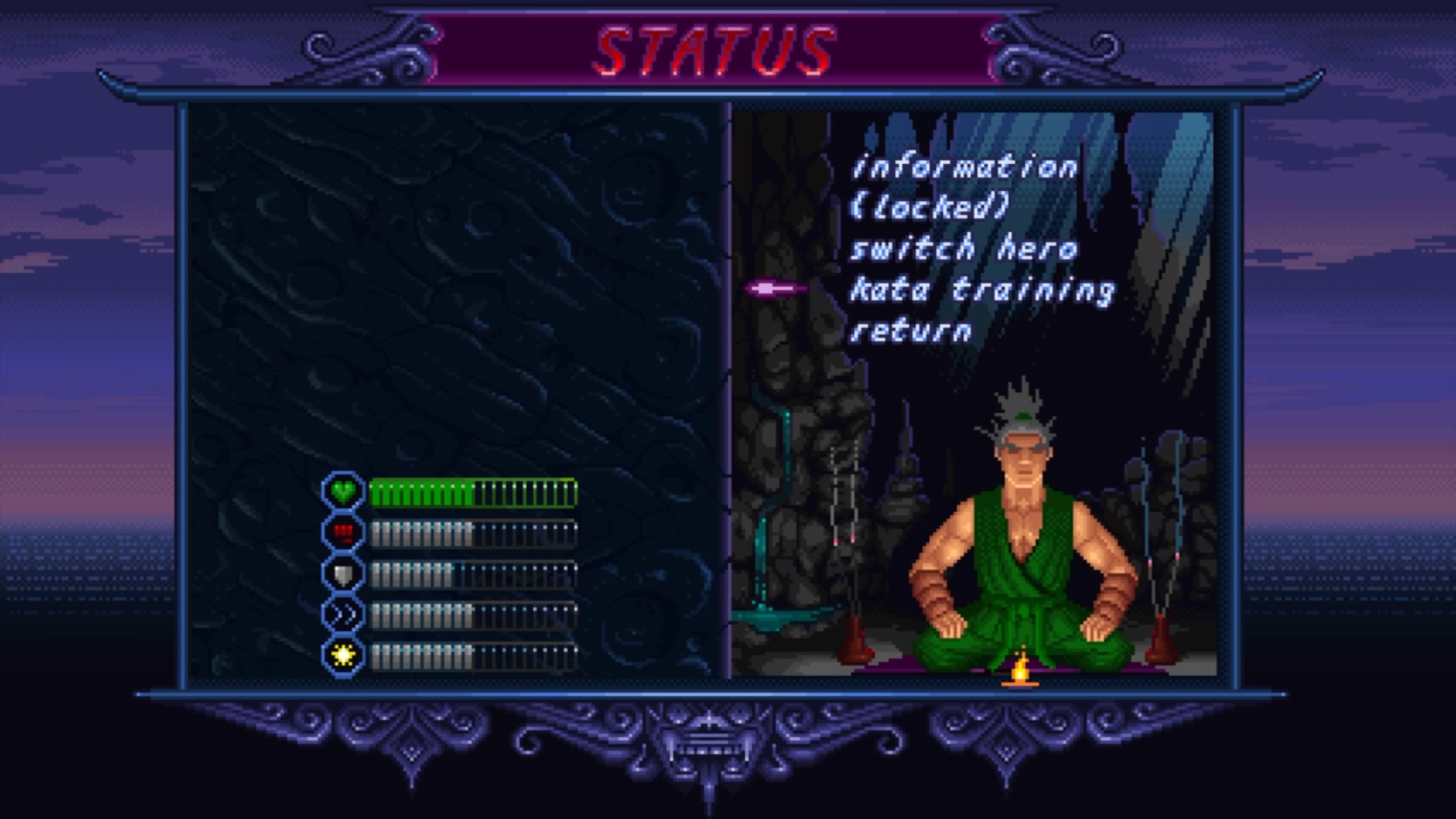
In terms of the UI design, Okinawa Rush retains the retro feel of the old arcade game selection, but I am not a fan of the character selection that is only available to be selected at the end of a dojo training session, rather than at the start mission selection. While playing as different playable characters have their own cutscenes, dialogue voice acting, opening, and ending; the type of boss fights still remains the same. Additionally, each of the selected characters’ attacking movements flows similarly without any distinct flavour to make each of them stand out. Additionally, there are some missing moves in the game currently shown on the main menu video, including MeiLin’s chain punch and Shin’s double punch. I was at first puzzled as to why I cannot perform it as shown in the video.
Although decorating the training dojo will boost your character’s stats, I don’t see the noticeable benefits while in combat. Despite the fluid animations of attacks, including weapon strikes, it would be better off if each weapon had its own special moves and throws to retain its durability instead of focusing only on light attacks.
Level Design
The level design in Okinawa Rush is lushly pixelated green forests, buildings, and dark caverns for players to sink their teeth in. Certain sections do appear disproportionately wide between ledges. This also adds to the confusion that some goal arrow indicators do inconsistently point out the right direction as well as dangerous traps and deadly pits.
Tip: You don’t need to press Down > Up + Jump to perform a high jump, Just Up + Jump would do the same trick.
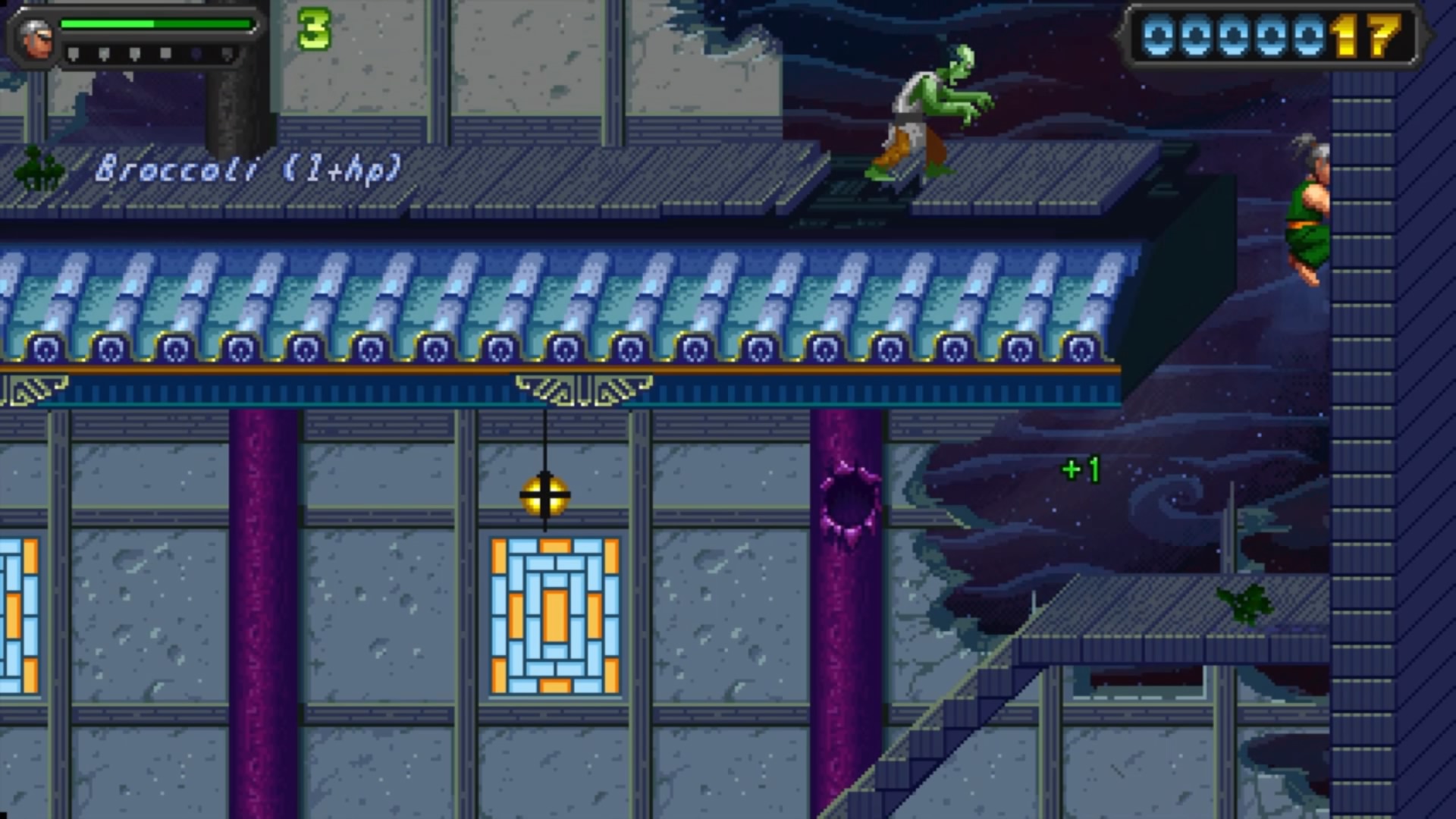
Bugs
There are quite a number of bugs when it comes to how the main character navigates throughout the levels, such as sliding down after standing on a ledge, gliding from one ledge to another while running, being unable to climb up certain terrains, or even skipped climbing ledge animation. In combat, dropping enemies sometimes do clip them through a wall as well as drop-kicking from the air sometimes stuns the main character mid-air. Being attacked by some bosses using certain skills does not allow main characters to have an invincibility frame for breathing space – ensuring certain deaths if get hit by the said move. Some cutscenes are skipped abruptly while some kidnapped NPC’s doesn’t appear to be tied up.
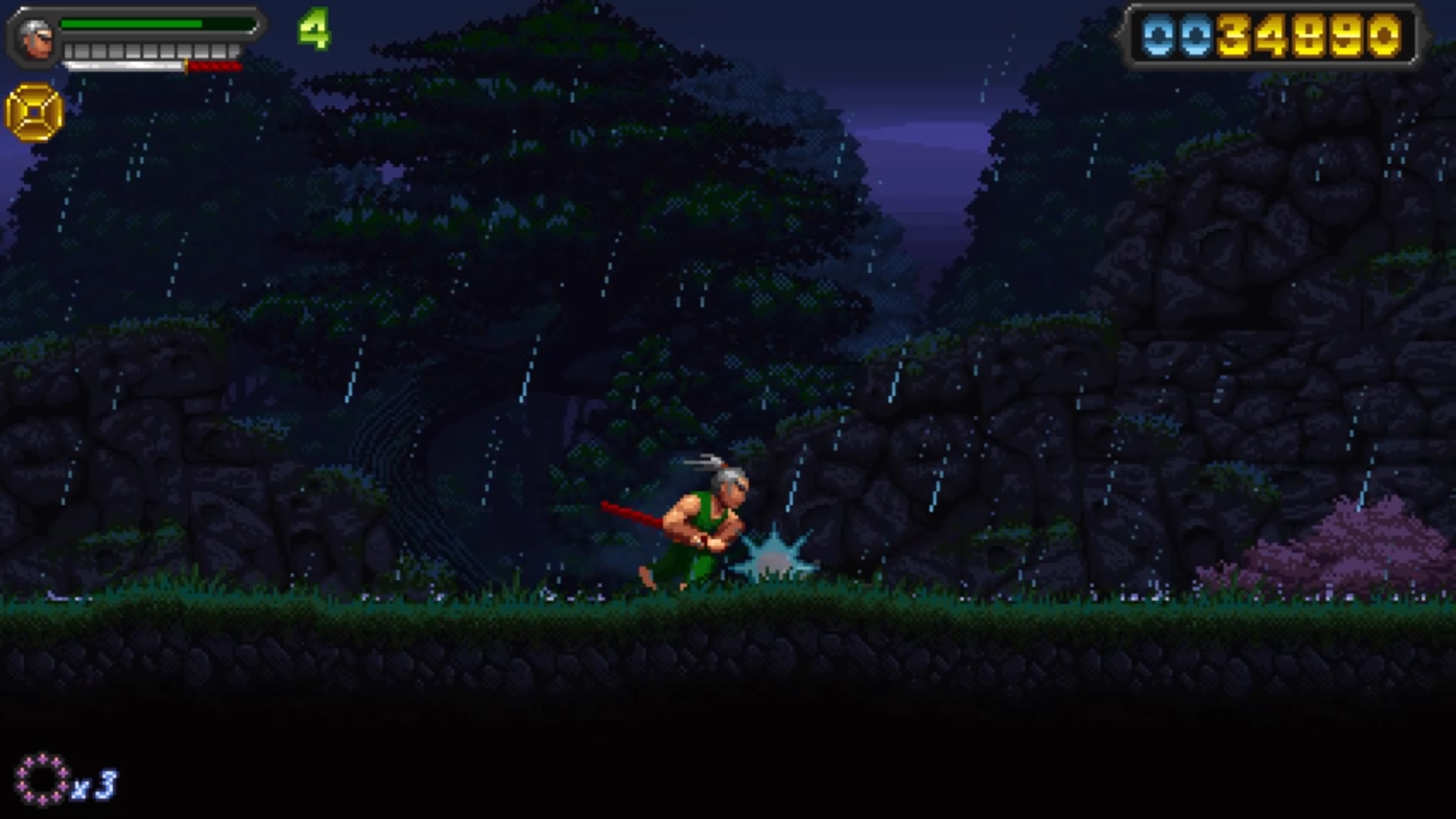
Story
Although the story starts off pretty well with the main character Hiro discovering his wife murdered by his enemies on their search for his training manual via in-game cutscene. Playing as other characters, however, still binds them to the same in-game cutscene with Hiro, while having their own cinematics that present other things that may cause them to feel disjointed.
It is never made clear throughout the campaign why Hiro’s training manuals are essential to the antagonist, while later on in the story the focus shifts to the power crystal without ever mentioning the training manual again.
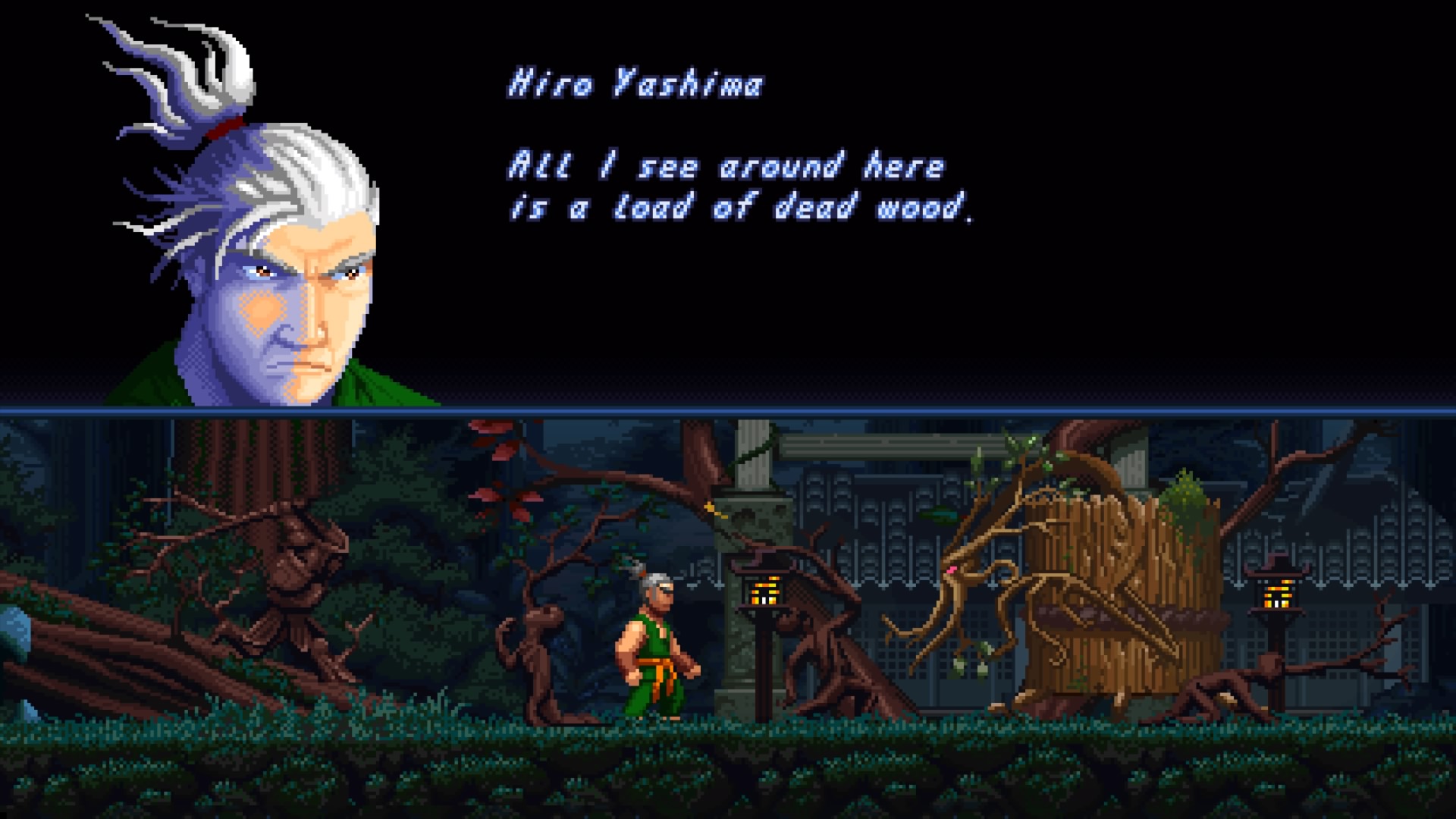
Sound and music
Okinawa Rush’s music is focusing more on the nostalgic arcade-style synthwave retro with some oriental flair alongside some upbeat funk I heard in between. The song list is fairly decent and comes in a variety for each stage, which is pretty good.
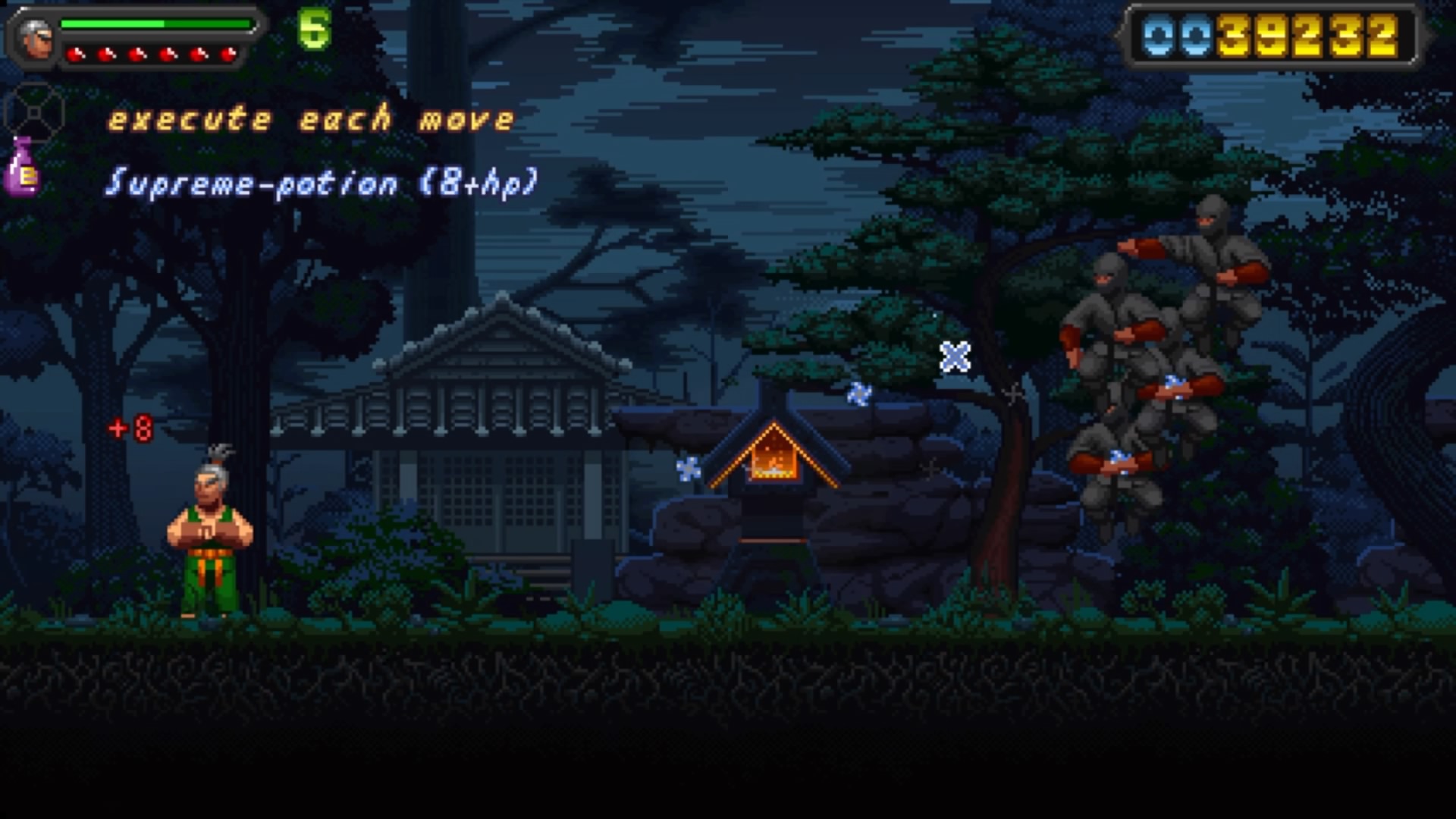
Okinawa Rush has a nice ring to the sound effects, much like how it would sound in an arcade game. One nitpicks about the sound effects: some punches delivered by the main character sound muffled at times, rather than the satisfying sounds created by enemies slamming into walls and weapon blow. In contrast to other arcade games with a louder ring, picking up certain objects, such as apples, sounds like picking up cardboard.
What I Liked
- Rush fights for adrenaline junkies
- Good synthwave soundtracks and kungfu flick like voice acting
- Decent character animation in both fights and minigames
- Offers a variety of enemies and some interesting boss designs.
- Difficulty settings that can be changed upon mission selection
- Attack animations
What I Thought Could Be Better
- Quite a number of bugs to iron out.
- Level Design is decent but certain sections have wide gaps in between, be it horizontally or vertically, forcing players to jump around non-stop or die trying.
- The main characters jumping animation motion feels unnaturally light and way too high.
- Danger traps, pits, and goal arrow indicators appear sporadic, and a few.
- Some moves such as dodging and higher jump commands can only be viewed in the move list rather than be trained separately in the Dojo.
- A lot of moves learned in the dojo such as blocking upwards and downwards are not applicable in the game due to most enemies’ straightforward attacks.
- The traps can be blocked, but it is tricky for me as at times traps are both facing upwards and downwards at the same spot.
- Some bosses’ attacks can be non-stop without invincibility frames for that extra breathing space, which can get frustrating at times.
- Change character screen should appear when selecting missions, not after training at the dojo.
- While having a variety of enemies and boss designs, their attacks patterns performed are similarly straightforward and can be easily blocked in both melee and projectiles.
- Weapons should have new skills and special heavy attacks on their own, not just fluid light attacks.
- Best suggested to add different movesets to each character will make them feel more distinct, flavorful, and fun in their own playthrough.
- Different boss fights depend on the character chosen.
- Enemy’s AI should have different attack methods to dismantle the main characters’ moves such as holding a shield or always blocking.
- Kata training minigames should also be part of the level challenges by normal NPCs, bosses, or even enemies themselves. Think of it as a special QTE challenge by other fellow martial artists.
- It would be better to have a more detailed training dojo that breaks down more moves, including combos, critical strikes, high jumps, and dodges with real-life dummy targets.
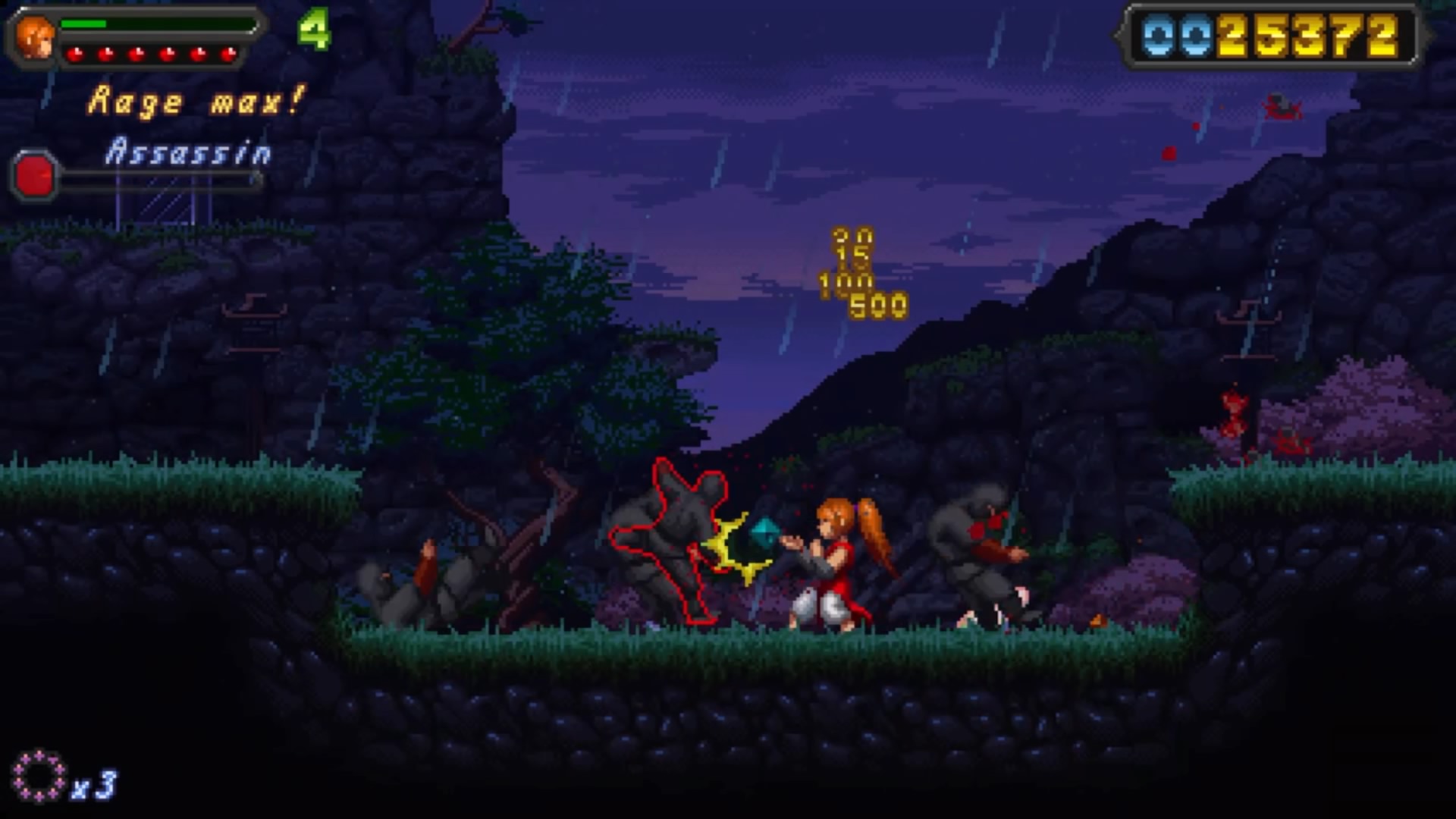
Verdict
After playing between two and four hours spanning across 5 stages, overall Okinawa Rush is a short casual fun-to-play arcade type of game with a few irritating nuances such as UI, disjointed cutscenes, and bugs that need to be ironed out. Nevertheless, in the event that you are concerned about the above things mentioned to make it a worthwhile experience. It may be best to try the demo before purchasing or waiting for a sale if you have mixed feelings after playing the demo. Consequently, Okinawa Rush serves the gameplay design purpose of keeping it simple, fast-paced, and frantic retro fun.
